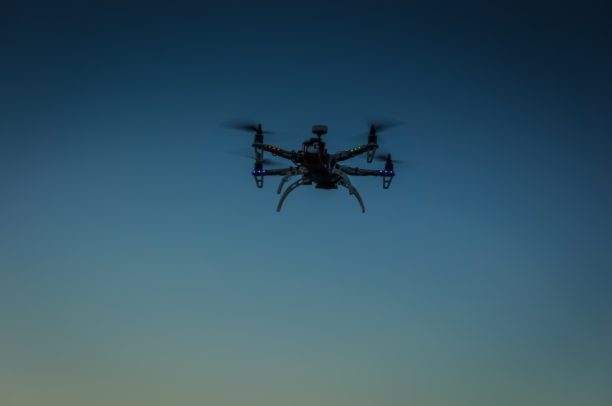Drone industry analysts DRONEII use their recent drone industry analysis to point out the key elements of good drone laws – and determine whether or not a country is ready for the commercial drone industry.
Regulating new technologies has always been a cumbersome task for authorities. This is because regulations must encompass technological leaps at the same time as they occur, and innovation is much faster than bureaucracy. Striking the balance between responsible and facilitating regulations is difficult, and various countries have taken very different approaches to drones.
In order to make comparisons between national regulations easier there is now a quantitative metric of a country’s preparedness for the current and future development of commercial drones – the Drone Readiness Index.
What goes into such an index? How do we determine whether a country is ‘ready’ for the current and continued development of commercial drones? There are six key factors that are crucial to a good drone law: applicability, human resources, administrative infrastructure, operational limitations, airspace integration, and social acceptance
Applicability
Not all countries in the world have drone regulations. Some have laws specifically dedicated to drones, some have adapted their general aviation regulations to include drones, and other make no reference to unmanned aircraft at all. A reference to drones in aviation legislation is the bare minimum a government must do to qualify as ‘ready’ for the current and future development of drones.
When examining laws it is also important to look for context. Legislation made four years ago but untouched since is likely to be outdated. Given the dynamic pace at which the industry is growing, it’s crucial to examine whether the drone regulations have been regularly updated. Continuous revisions reflect the government and bureaucratic apparatus’ willingness and drive to grow the drone market by continuing to address the emerging regulatory challenges in the commercial drone space.
Human Resources
Despite the drive towards fully autonomous drones, the drone industry still requires significant human resources to move forward. It is crucial to measure the efficacy of regulations to streamline the process of recruitment and training of humans for work in the commercial drone industry i.e. the consideration for pilots.
The HR parameter of the Drone Readiness Index measures what sort of infrastructure is in place for training and certifying pilots, assuming that the more comprehensive the drone regulation, the more consideration it has for those flying drones. The parameter also measures the results of the regulations by comparing the numbers of approved drone operators per capita in different countries.
Administrative Infrastructure
A sound and functioning administrative infrastructure is the key support a government can provide to new tech. In a new and often legally undefined space, governments often scramble to develop administrative infrastructure for new businesses to rely on.
This parameter measures the administrative infrastructure in place to facilitate the responsible use of commercial drones which includes insurance requirements, drone registers, and standard procedures for acquiring flight permissions. Administrative infrastructure is graded on not only how comprehensive it is, but also how clear and streamlined it is (considering e-infrastructure, for example).
Operational Limits
The most common regulation question is “where can you actually fly a drone?” Countries vary greatly in the sort of limitations they have in place for the operation of a drone. To balance out strict administrative requirements, it is critical to provide a range of operational limits which allow the drone industry to keep developing state of the art solutions, as long as they adhere to the legislation in place.
This parameter measures whether, where and how drones are able to operate. It compares countries by whether their regulations allow fo BVLOS (Beyond the Visual Line of Sight) flights or not, at night or not, near people or not. As such the Drone Readiness Index is also able to measure the headway countries are making towards urban aerial mobility.
Airspace Integration
If urban aerial mobility is the goal then successful airspace integration is essential to success. In order to be able to fly drones in urban environments and in ‘special conditions’, it is crucial for unmanned aircraft to be able to operate smoothly in zones which are currently restricted. This parameter measures whether and to what extent there have been regulatory efforts to integrate manned and unmanned airspace.
Social Acceptance
Social acceptance of a new technology is crucial to its success. The major concerns that people usually have with drones is their ability to fly in their proximity and enter their personal space without authorisation. Many debates over drones and urban aerial mobility have centred on the issues of privacy and personal data protection. The most forward-looking responsible drone law anticipates this issue and provides a clear outline of drone operator responsibilities when flying in order to protect people’s privacy.
This parameter measures the consideration of social acceptance hurdles of drone regulations as the best drone laws will be helpful in mitigating reputational risks. It is used to analyse whether a drone law has considered data protection and/or privacy concerns.
Miriam McNabb is the Editor-in-Chief of DRONELIFE and CEO of JobForDrones, a professional drone services marketplace, and a fascinated observer of the emerging drone industry and the regulatory environment for drones. Miriam has penned over 3,000 articles focused on the commercial drone space and is an international speaker and recognized figure in the industry. Miriam has a degree from the University of Chicago and over 20 years of experience in high tech sales and marketing for new technologies.
For drone industry consulting or writing, Email Miriam.
TWITTER:@spaldingbarker
Subscribe to DroneLife here.
